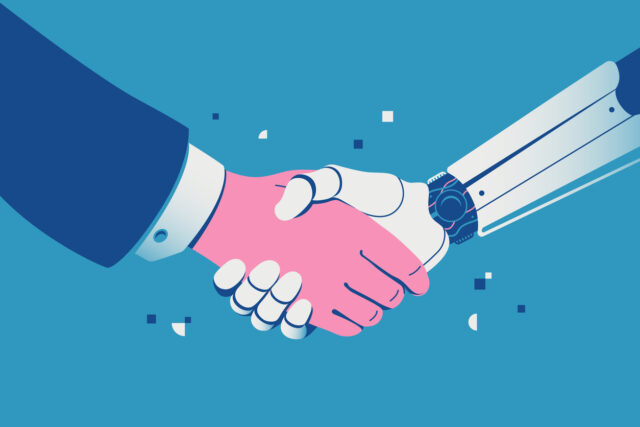In today’s ever-evolving business landscape, companies are facing a multitude of challenges when it comes to managing and controlling their spending. From global supply chain disruptions, outdated technology solutions, labor shortages and much more, these challenges have an immense impact on a company’s financial health and overall efficiency. Additionally, procurement teams are regularly tasked with new responsibilities beyond spend management and purchasing, such as managing supplier risk, building, and implementing CSG and ESG initiatives, studying economic trends to determine price elasticity, finding new sources of supply, and cleaning up disparate and dirty data. Yet most companies simply do not have the human capital or bandwidth to execute these areas with quality and control.
When it comes to bridging the gap between the obligations that procurement teams are tasked with and efficiently executing on these tasks, AI may be the great equaliser to help solve these problems. While AI has turned into somewhat of a buzzword in today’s market, there’s no doubt that the technology has powerful capabilities to truly transform procurement in the foreseeable future. For those changes to take place, it is important for procurement professionals to continue to articulate the problems they are facing on a daily basis, as this will force the industry to evolve and adopt the proper solutions for better business outcomes.

The problems: Unchecked spending, outdated tech, and lack of governance
Irresponsible spending can wreak havoc on a company’s financial well-being. With non-managed indirect and direct spend categories, companies experience up to a 40% increase in costs, consequently eroding their gross margins and increasing operating expenses. This usually stems from lack of visibility into non-payroll spend categories, combined with old and antiquated technology solutions within enterprise infrastructure that makes it difficult to extract data, analyse spending patterns, and generate meaningful reports on total addressable spend (sound familiar?). Poor data quality and the need for data cleansing can impede effective spending management, leading to faulty decision-making that hinders procurement efforts.
Unchecked spending can also foster a culture of mistrust and overall decreased morale among employees. When employees perceive that their hard work and dedication are being undermined by wasteful spending practices, workers begin to feel disengaged — which leads to reduced productivity. When spending is not carefully managed, there is a risk that critical projects or departments may not receive the resources they need to thrive. This not only causes anxiety about the organisation’s financial health, but it also can lead to concerns about resource allocation and fairness. Therefore, it creates broader mistrust in organisational leadership.
One of the biggest culprits in inefficient spending management comes from a lack of visibility into supplier contracts, which stifles a company’s ability to identify cost-saving opportunities. Hidden fees, price escalations, and unexpected cost structures can be buried in supplier contracts. A lack of visibility can result in unexpected cost overruns, impacting the organisation’s budget and profitability. Departments may also struggle to fully understand the terms and conditions within these contracts, including performance expectations, delivery schedules, and penalty clauses. This lack of clarity can increase the risk of contract breaches, quality issues, or delivery delays.
The long-term benefits of incorporating AI into procurement
With more at stake within procurement departments than ever before, AI serves as a turbocharged catalyst for procurement teams to optimise their processes. Procurement leaders are increasingly delegated additional responsibilities and AI offers an invaluable assistant that can process, predict, and deliver information and outcomes without exhausting human resources. For example, predictive and smart reordering can keep items that require ongoing restocking on a regular purchasing cycle. AI can also help identify alternative sources or suppliers for this item that may offer additional cost-savings and attractive incentives. As this technology becomes increasingly more capable, it’ll save procurement departments hours of time — freeing up employee bandwidth to then focus on optimising supplier relationships and other strategic tasks.
Earlier, we discussed how unchecked spending leads to mistrust and disengagement within an organisation. AI can help re-establish morale and an engaged staff by gamifying the procurement process. For example, a company can create a scenario where employees and teams are rewarded with soft benefits for complying to procurement policies, reducing maverick spend, improving supplier relationships, or negotiating a new deal with a strategic supplier. These soft benefit rewards can be programmed into the system to track and signal when teams are hitting these goals. Gamification, particularly when entire teams are rewarded together, can foster camaraderie and a dynamic culture built around the thrill of victory, aligning employees with the company’s procurement strategies.
Ensuring a smooth transition to AI-driven procurement processes
When beginning the transition towards an AI-infused process, it requires an honest assessment of existing processes, data quality, and technology infrastructure to identify pain points and areas where AI can provide the most value. Integration will require some level of customization to meet the specific needs of your business, such as custom algorithms, workflows, or user interfaces. This is an ongoing process. Optimisation requires the continuous gathering of feedback from users and stakeholders to identify which areas are working well and which features need improving. Be prepared to adapt as you go along. AI is a rapidly evolving field, and we are in the very early stages of realising the true potential of this technology.
As the AI revolution takes place in procurement, employees need to be introduced to new technologies to understand the strengths and more importantly the limitations. However, when thinking of the big picture, Procurement teams must be prepared to upskill their talent pool and recruit new talent to maximise AI’s potential including investing in certifications in data science, cloud platforms, supply chain management, and data analytics. To reap the benefits of automation, data-driven insights, and enhanced decision-making, leadership requires teams that have skills to use and interpret AI tools effectively — particularly when it comes to data management. AI solutions rely heavily on data and procurement teams must know how to effectively manage this data, including data cleansing, integration, and analysis to ensure that the algorithms receive high-quality input data and large language models for accurate results and the promise of real predictive analytics.
The promise of a brighter future
This is also why collaboration between departments is essential. For AI technology to be implemented effectively, it requires synchronisation and cross-functional collaboration between IT, data science, corporate procurement, finance, and other departments. Companies that cultivate these collaborative ecosystems within their departments gain a strategic edge in terms of stability and future growth.
It’s important to note that while AI is a productivity and enablement tool, it is not a replacement for human intellect, willpower, and execution. Therefore, it’s essential to seek knowledge and expertise from insights from companies, networking groups, and individuals with practical experience in AI and GenAI capabilities. Remember, it’s important that you do not let AI drive your business, but rather let your business needs drive AI adoption. Define the specific problem that you aim to solve and determine if AI is the right tool to boost these areas.
Ultimately, the incorporation of AI into procurement processes holds the promise of a brighter, more efficient future for businesses. Procurement departments face many challenges but if they address these pain points with a strategic approach that involves the adoption of modern technology solutions while upskilling their workforce, businesses can expect to soon see enhanced visibility into their spending and gain a strategic edge in a competitive market. One thing is certain, AI will transform the procurement professional and function into a data analytics and supplier relationship mastermind.
By Shaz Khan











